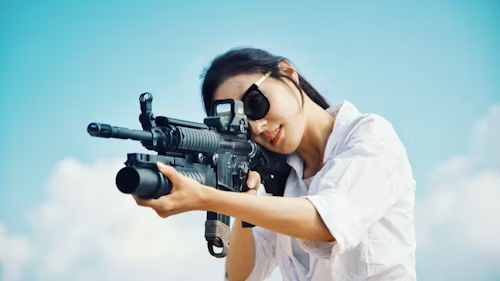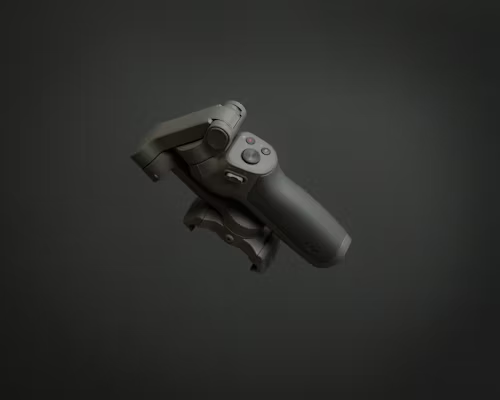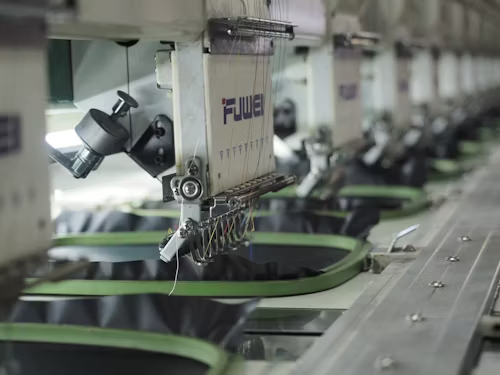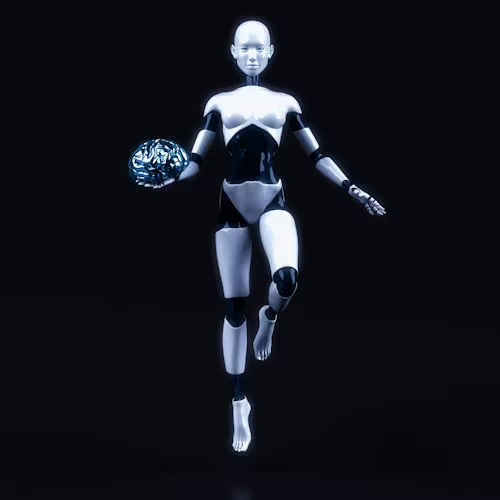Can AI Stop Gun Violence Before It Happens? Understanding AI Gun Detection

Imagine a camera that doesn’t just record what’s happening but actually “understands” when it sees something dangerous like a gun. That’s the idea behind AI gun detection, a new safety technology that can recognize visible firearms and alert security teams before tragedy strikes.
Over the last few years, schools, malls, hospitals, and transportation hubs have all been looking for better ways to prevent gun violence.
While traditional methods such as metal detectors or security guards help, they often can’t cover every angle or work fast enough. Artificial Intelligence (AI) offers another layer of protection. This article will explain everything:
What Is AI Gun Detection?
AI gun detection is a technology that uses computer algorithms to spot guns in video footage from security cameras. It doesn’t rely on a human staring at a screen 24/7 instead, it “watches” automatically. Here’s a simple explanation:
- Camera feeds: Regular surveillance cameras capture live footage.
- AI software: The video frames are analyzed by an AI program that has been trained to recognize the shape and details of firearms.
- Alerts: When the system thinks it sees a gun, it sends a notification to a control room, phone app, or security officer.
- Human check: Trained staff confirm whether it’s real or a false alarm before taking action.
How Does AI Detect Guns?
1. Learning from Examples
To “teach” AI how a gun looks, developers use thousands of images of firearms in different environments; indoors, outdoors, light, dark, from every angle. The AI also studies similar objects (like phones, tools, and toys) so it can learn the difference.
Through machine learning, the software builds a kind of “memory” of what a gun looks like. It learns patterns of edges, curves, and colors that distinguish weapons from harmless items.
2. Real-Time Detection
When installed, the system constantly reviews video frames, often 30 per second. Each frame is analyzed to see if any object matches its “gun” pattern.
If it spots something suspicious, it marks that part of the image and sends an alert to security staff. Many systems show a red box around the detected item so the human operator can quickly confirm.
3. Speed and Accuracy
When it comes to speed and accuracy, modern AI gun detection systems are built to act in the blink of an eye, often identifying potential threats within milliseconds. This lightning-fast response can make a crucial difference in preventing harm.
However, accuracy isn’t just about powerful algorithms; it also depends on real-world factors like lighting conditions, camera quality, and how clearly the firearm appears in view. If a weapon is partly hidden, angled, or poorly lit, even the smartest AI may struggle to detect it correctly. In short, the better the visuals, the smarter and faster the detection.
Why AI Gun Detection Matters
1. Faster Warnings Save Lives
In emergencies, every second truly matters. AI gun detection systems can spot a visible weapon and alert security teams or law enforcement almost instantly; sometimes before a single shot is fired. That early warning gives people precious moments to take cover, lock doors, or evacuate safely. It’s a difference measured not just in seconds, but in lives saved.
2. Continuous Monitoring
Human guards can get tired, distracted, or simply miss what’s happening on multiple screens. AI doesn’t. It keeps a constant watch 24/7, scanning every camera feed without fatigue. That continuous attention helps ensure nothing important slips through the cracks, even in the middle of the night.
3. Uses Existing Cameras
One of the best parts about AI gun detection technology is that it usually doesn’t require buying new cameras or complex setups. The software can connect directly to the surveillance systems an organization already owns, making it a practical and cost-effective way to enhance safety without major upgrades.
4. Scalable Safety
Whether it’s a single school, a shopping mall, or a large transportation hub, AI scales easily. It can monitor dozens or even hundreds of cameras at once, giving security teams broader coverage with fewer people. That scalability makes it ideal for large facilities or city-wide networks aiming to improve safety efficiently.
5. Useful for Investigations
When incidents occur, AI detection systems provide a valuable trail of evidence. Flagged footage can show exactly when and where a weapon first appeared, helping investigators or internal security teams save hours of manual review. This speeds up response times and helps ensure accurate, transparent reporting.
Practical Uses of AI Gun Detection in Everyday Settings
AI gun detection is already being tested or used in:
- Schools: Many districts add this technology to boost early-warning systems.
- Hospitals: To protect staff and patients in open areas.
- Shopping centers and event venues: To keep crowds safe without slowing entry lines.
- Public transport: Train stations, airports, and buses use it to watch for visible firearms.
- Businesses and offices: Especially those that already have CCTV networks.
Top Benefits of AI Gun Detection You Should Know
| Benefit | Explanation |
|---|---|
| Early warning | Detects visible guns before shots are fired |
| Automation | Reduces manual monitoring workload |
| Integration | Works with existing CCTV setups |
| Scalability | Covers multiple locations efficiently |
| Support for law enforcement | Provides evidence and quick situational awareness |
Challenges and Limitations
Even though the idea is exciting, AI gun detection is not perfect. Here are key challenges:
1. False Alarms
Sometimes the system mistakes harmless objects for guns such as a camera tripod, phone, or umbrella. These “false positives” can cause unnecessary panic.
2. Missed Detections
If the gun is hidden under clothing, inside a bag, or out of the camera’s view, the AI won’t see it. It can only detect what’s visible.
3. Bias in Data
If the AI was trained mostly with certain lighting, environments, or skin tones, it might perform worse in others. Developers must use diverse training data to ensure fairness.
4. Privacy Concerns
Because these systems constantly watch people, it’s important to handle data responsibly — avoiding misuse, over-surveillance, or long-term storage of personal images.
5. Dependence on Good Cameras
Poor image quality, bad lighting, or wrong camera angles reduce performance. Proper setup and maintenance are critical.
6. Cost and Maintenance
Although cheaper than replacing all cameras, good AI systems still cost money and require regular updates, staff training, and performance checks.
Ethical Considerations
AI gun detection touches sensitive issues. Responsible use must balance safety with privacy and rights.
- Transparency: People should know when and where AI systems are used.
- Accountability: A human should always confirm detections before taking major actions.
- Data protection: Footage should be encrypted, stored safely, and deleted when no longer needed.
- No discrimination: The AI must be tested across diverse populations to avoid unfair results.
- Legal compliance: Systems must follow laws on surveillance and data privacy.
Best Practices for Safe Deployment

Implementing AI gun detection technology is not just about installing software, it’s about using it responsibly, transparently, and effectively. Organizations that follow best practices can maximize safety while protecting privacy and public trust.
1. Start Small
Before rolling out AI gun detection across an entire facility, it’s wise to start small. Test the system in a controlled area, such as a single building or entry point. This pilot phase helps identify any technical issues, fine-tune settings, and build confidence in the technology’s performance before wider deployment.
2. Validate Regularly
AI systems are only as good as their accuracy. Regular validation, checking both false positives (mistaken alerts) and false negatives (missed detections); ensures reliability. Ongoing testing helps refine the model and maintain trust among users and stakeholders.
3. Train Staff
Technology works best when people understand it. Security personnel and administrators should be trained to interpret AI alerts correctly and respond appropriately. This training prevents overreaction to false alarms and ensures that real threats are handled swiftly and calmly.
4. Combine Layers
AI gun detection shouldn’t replace existing safety measures, it should enhance them. The best results come from combining AI with physical security guards, controlled access points, and clear emergency response plans. Layered security creates stronger protection overall.
5. Protect Privacy
Safety should never come at the expense of privacy. Organizations must take steps such as masking faces when they’re not relevant to detection, limiting how long data is stored, and restricting who can access it. A privacy-first approach builds trust and keeps systems compliant with regulations.
6. Communicate Clearly
Transparency is key. Let employees, students, and visitors know that AI detection systems are there to protect, not to spy. Open communication helps reduce fear or misunderstanding and encourages cooperation during emergencies.
7. Update Software
AI models and cybersecurity threats evolve constantly. Keeping systems and software up to date ensures the technology stays accurate, efficient, and secure. Regular updates also improve detection performance and help prevent potential vulnerabilities.
What AI Gun Detection Can’t Do
To stay realistic, here’s what AI detection cannot yet accomplish:
- It cannot detect hidden guns (inside bags or clothing).
- It cannot replace human judgment; final decisions need people.
- It cannot promise 100% accuracy; errors will happen.
- It cannot work well without proper camera placement.
- It cannot operate ethically without oversight.
The Future of AI Gun Detection
The future of AI gun detection looks both promising and powerful, but its success will depend on how responsibly we develop and deploy it. As technology evolves, AI is becoming faster, smarter, and more privacy-aware, shaping the next generation of public safety tools.
Soon, we’ll see systems that use multi-sensor input, combining video with sound, radar, or even thermal imaging to recognize threats more accurately. Edge processing will allow the AI to run directly on cameras, cutting down delays and reducing network load. With federated learning, these systems will improve themselves securely, without sharing sensitive video data or compromising privacy.
At the same time, smarter algorithms are emerging, capable of detecting smaller or partially hidden weapons with greater precision. And as adoption grows, clearer regulations will help guide how AI is used, ensuring fairness, transparency, and accountability. In short, the technology is moving forward fast, and with the right ethical guardrails, AI gun detection could become a truly trusted partner in keeping our public spaces safe.





